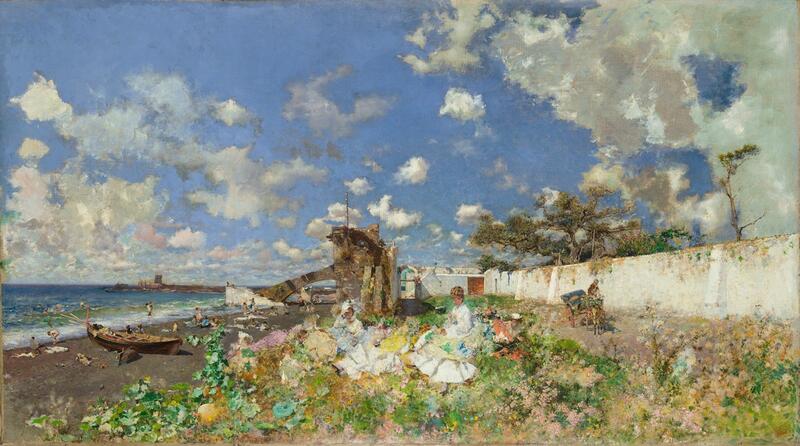MEADOWS MUSEUM: 20 YEARS OF COMMITMENT TO SPANISH ART
The Meadows Museum (Dallas, USA) celebrates the 20th anniversary of its new building with an exhibition —Building on the Boulevard: Celebrating 20 Years of the Meadows's New Home— dedicated to its collection of Spanish art, the largest and most important outside Spain. The exhibition opened on Sunday 14th and features artworks by Velázquez, Ribera, El Greco, Murillo, Goya, Miró, Picasso and Dalí, among many others.
Since the opening of the Bulevard building in 2001, the Meadows Museum has been deeply committed to the dissemination of Spanish art in North America. So much so that the inaugural exhibition, twenty years ago, was dedicated to the architect Santiago Calatrava Valls, who was only 49 years old at the time. This was not only a confirmation of the museum's interest in art from the Iberian Peninsula, but also served as a symbol of openness towards contemporary production. On that occasion, Calatrava Valls made a kinetic sculpture —Ola (Wave, 2002)— for the museum's sculpture park. Today, the sculpture is an emblem of the American institution.

Building on the Boulevard: Celebrating 20 Years of the Meadows's New Home highlights the evolution that the American museum has undergone since the inauguration of its new building. Since then, the Meadows has acquired some 250 artworks by Spanish artists from all periods, from Pere Vall's Saint Benedict and Saint Onofre (c.1410) to Goya's Portrait of Mariano Goya (1827) and Salvador Dalí's Fish Man (1930). In addition to the acquisition of works by contemporary Spanish artists, such as the acquisition in 2009 of the sculpture Sho (2007) by Jaume Plensa (Barcelona, 1955), permanently exhibited in the museum's sculpture plaza.
The anniversary also coincides with the 20 years that Mark A. Roglan, current director Linda P. and William A. of the Meadows Museum, has dedicated to the institution. Roglan has been one of the fundamental elements, both on a diplomatic and artistic level, in strengthening the links that the Meadows Museum currently has with Spanish art institutions such as the Prado National Museum, the Archaeological National Museum and the Thyssen-Bornemisza National Museum.
Roglan trained as an assistant curator and researcher at the Prado National Museum. In 2001, with the opening of the new building, the Meadows invited him to join the museum's curatorial team, in addition to being an adjunct professor of art history. Five years later Roglan was appointed director of the Meadows which, since then, has seen meteoric growth, both in terms of visits and recognition, positioning itself as the leading reference for Spanish art outside Spain. On one occasion, proud of the museum's development, Roglan said: "I think we have truly created a 'little Prado Museum' in Texas".
-
Retrato de Mariano Goya, 1827, Francisco José de Goya y Lucientes (España, 1746-1828) . Óleo sobre lienzo, 52,1 x 41,3 cm (20 1/2 x 16 1/4 pulg.). Museo Meadows, SMU, Dallas.
-
"Lady Reading", c. 1900–5, Ramón Casas y Carbó (España, 1866-1932). Acuarela y tiza negra sobre papel, 5 1/2 x 8 7/8 pulgadas (14 x 22,5 cm). Museo Meadows, SMU, Dallas.
-
"El hombre pez (L'homme poisson)", 1930, Salvador Dalí (España, 1904-1989). Óleo sobre lienzo, 10 1/2 x 7 1/2 in. (26,7 x 19,1 cm). Museo Meadows, SMU, Dallas.
-
Vista de la exposición Fernando Gallego y su taller: el retablo de Ciudad Rodrigo. Pinturas de la colección del Museo de Arte de la Universidad de Arizona. Foto de Michael Bodycomb.
-
Exterior del Museo Meadows y su plaza de esculturas con Ola de Santiago Calatrava (2002) en primer plano y el estadio Gerald J. Ford al fondo. Foto de Hillsman Jackson.
And the museum director's statement is not inaccurate. Since taking over as director, the Meadows Museum has been a representative in the United States of Spanish public institutions and important private collections. It has housed works from the Prado National Museum, the Thyssen-Bornemisza National Museum, the Royal Palace and the Archeological National Museum, among others. On more than one occasion, presenting oeuvres never before exhibited to the American public, as for example in the exhibitions From Cranach to Monet: masterpieces from the Pérez Simón Collection (2006); The Abelló Collection: the modern taste for European masters (2015); and Treasures from the House of Alba: 500 years of art and collecting (2015).
Finally, in addition to the exhibition celebrating the twentieth anniversary of the new museum, this year the Meadows will present a solo exhibition of the Spanish artist Ignasi Aballí (Barcelona, 1958), selected for the MAS: Meadows/ARCO Artist Spotlight programme. The partnership with the ARCO Foundation in 2019 is a further step by the American museum to extend its support not only to the conservation of works by the great masters of the past, but also to contemporary artists.


